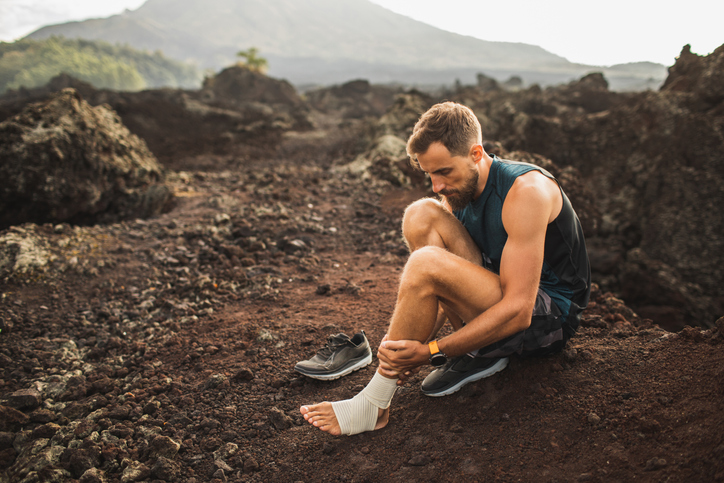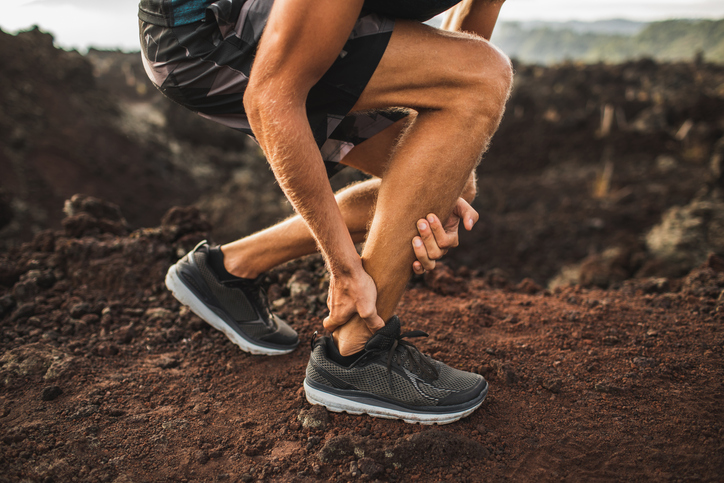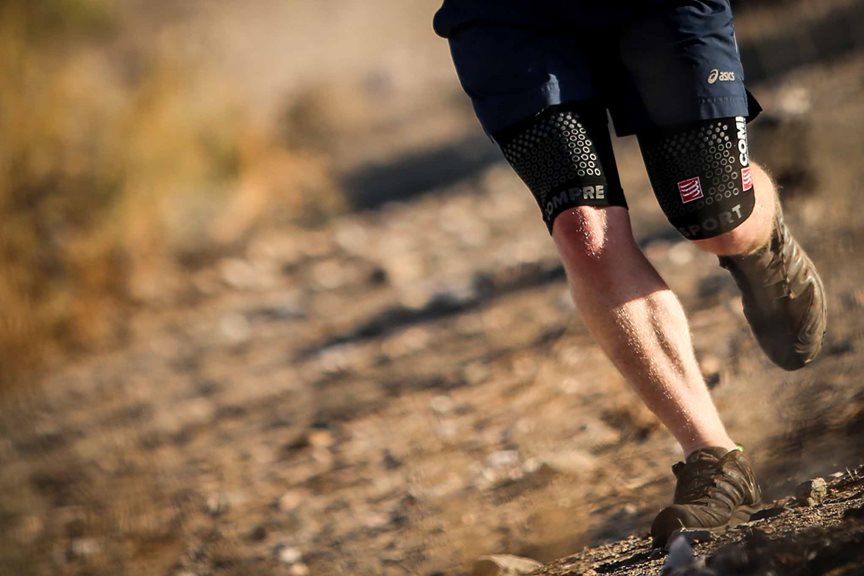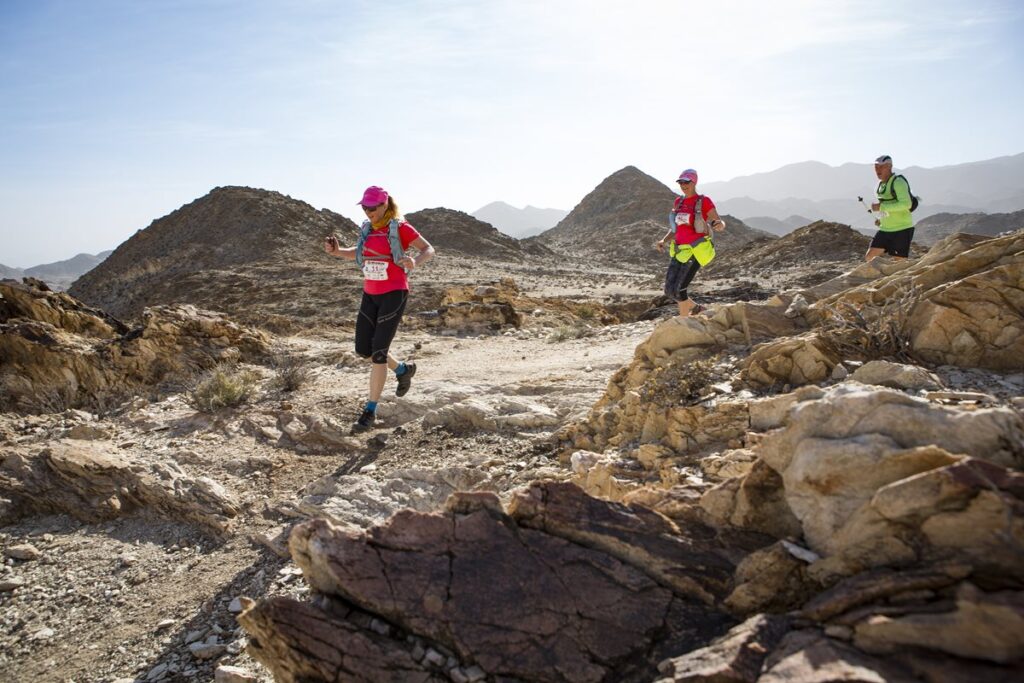Injuries are an unfortunate, but often inevitable part of long-distance running. They can sideline you for weeks or even months, disrupting your training and casting doubts on your future performance. However, with the right approach, recovering from an injury can make you a stronger and more resilient runner.
Understanding the Cause of Your Injury
The first step in recovering from a running injury is to understand its cause. This can be challenging, as injuries often result from a combination of factors, including biomechanics, training volume, intensity, running form, nutrition, stress, and sleep patterns. It’s important to note that identifying the cause is more than just treating the symptoms; it can help prevent future injuries. In my experience as an ultrarunning coach, I’ve found that many injuries can be traced back to these common causes:
- Overuse: Overuse injuries result from repetitive strain without sufficient rest, leading to breakdown and injury. This is often due to increasing mileage or intensity too quickly without giving the body enough time to adapt.
- Biomechanical Imbalances: These refer to structural or functional anomalies in the body, such as leg-length discrepancies or overpronation, which can cause certain muscles or tissues to bear excessive strain.
- Weak or Inactive Muscles: Weakness in certain muscles, especially the glutes and core, can lead to poor running form and increased stress on other parts of the body.
- Inadequate Recovery: Rest and recovery are critical components of training. Without proper recovery, the body doesn’t have time to repair and strengthen itself, increasing the risk of injury.
- Poor Nutrition: Nutrition plays a vital role in recovery. A diet lacking in key nutrients can impair the body’s ability to repair itself and increase the risk of injury.
Remember, everyone is unique, so what causes an injury in one runner may not cause an injury in another. Consulting with a physical therapist or a trained professional can help identify your individual risk factors and guide your recovery process.
The Importance of Professional Help
Now, here’s a soapbox moment: AVOID soliciting advice on Facebook! Every member of running groups seems to miraculously transform into a medical professional!!
While there may be some mental solace in realising that others have experienced a similar injury, it’s crucial to acknowledge our uniqueness. Just because a specific approach helped someone else overcome [insert vexing injury name here], doesn’t necessarily mean it will work for you. In fact, it could potentially lead to more complications! Please, bear this in mind.
In the event of an injury, it is crucial to seek the help of a professional. A physical therapist or sports medicine doctor can provide a proper diagnosis and treatment plan based on your specific condition.

Rehabilitation
Physical rehabilitation is a critical part of the recovery process. This often includes a combination of strength and conditioning exercises, balance training, and flexibility work.
Your physical therapist may also recommend modifications to your running form or training plan to help prevent future injuries.
Strength Training for Runners
Resistance exercises can help to strengthen the muscles, tendons, and ligaments involved in running, which can improve your running economy and help prevent injuries. Strength training should be specific to your needs and weaknesses, so it’s advisable to work with a professional who understands the demands of ultrarunning.
Balance and Proprioception:
These exercises can improve your body awareness and control, reducing the risk of falls and missteps that could lead to injury. Balance training can be as simple as standing on one foot or as complex as using balance boards or stability balls.
Flexibility: While runners don’t need extreme flexibility, maintaining a healthy range of motion can prevent imbalances and compensations that could lead to injury. This can be achieved through dynamic warm-ups, post-run static stretches, and modalities like yoga or Pilates.
While rehabilitation can be a slow process, it’s important to stay patient and not rush your recovery.
Rest and Recovery: The Cornerstone of Successful Rehabilitation
In the pursuit of improved performance, it is easy to forget the importance of rest and recovery, especially for ultrarunners. Yet, these elements are crucial for the body to repair and adapt, becoming stronger and more resilient. This process is even more critical during injury rehabilitation when the body is working overtime to heal.
The Science of Rest and Recovery
Past and recent research underscores the importance of adequate rest and recovery in athletic performance and injury rehabilitation:
Sleep
A meta-analysis by Bonnar, Bartel, Kakoschke, & Lang (2018) highlights the critical role of sleep in athletic performance. The study showed that sleep deprivation can negatively affect speed, accuracy, and reaction times in athletes. In contrast, optimal sleep can enhance performance, mood, and recovery. In the context of injury, excellent quality sleep provides the body with the optimal conditions for healing and repair.
Rest Days
Regular rest days allow your body to recover from the physiological stress of intense training. Over time, rest and recovery periods lead to performance gains, as the body rebuilds stronger in response to the training stimulus. Rest days also give the body additional capacity to repair any damage, crucial when rehabilitating an injury.
Active Recovery
Gentle movement on rest days, known as active recovery, can also aid in the recovery process. Activities like walking, light cycling, swimming, or yoga can stimulate blood flow to the muscles, aiding in nutrient delivery and waste product removal.
Making Rest and Recovery Work for You
Here are some ways you can implement effective rest and recovery strategies:
Prioritize Sleep
Aim for 7-9 hours of sleep per night, creating an environment conducive to decent quality sleep and a routine that allows for enough time in bed.

Schedule Rest Days
Ensure your training plan includes scheduled rest days. Use these days for light activity or complete rest, depending on your body’s needs.
Listen to Your Body: If you are feeling particularly fatigued, it might be a sign that you need additional rest. Tuning in to your body’s signals and responding accordingly is an essential skill for every athlete, particularly during injury rehabilitation.
Rest and recovery are not merely a break from training; they are an integral part of the training and injury rehab process itself. So, make sure you are giving your body the time and conditions it needs to repair, adapt, and grow stronger.
The Mental Aspect of Returning to Running After Injury
Returning to running after an injury is not only a physical challenge but also a mental one. The psychological aspects of recovery can be just as significant as the physical ones. Your mindset can greatly impact your rehabilitation process, making it essential to focus on strategies for mental resilience alongside your physical recovery.
Set Realistic Expectations: The Path to a Healthy Recovery
After an injury, it’s important to adjust your expectations and understand that you might not be able to run the same distances or at the same pace as before, at least initially – the good news, is that these things do come back fairly quickly, and if your injury layoff has only been a matter of a few weeks, fitness doesn’t subside as quick as you might think! Learning to be patient with yourself and celebrating small victories can significantly improve your mental wellbeing during recovery.
The Power of Goal Setting
Setting realistic, attainable goals can provide motivation and a sense of purpose during your recovery.
When setting your recovery goals, ensure they are SMART: Specific, Measurable, Achievable, Relevant, and Time-bound. This approach will help you make steady progress, maintain focus, and achieve your overall objective of returning to running.
Stay Positive and Motivated: The Mindset for Success
Maintaining a positive mindset and staying motivated can be a game-changer during your recovery journey. Remember, setbacks are part of the process, and each one brings you one step closer to your goal.
The Importance of Positivity
A study by Ievleva and Terry (2008) found that athletes who maintained a positive attitude during injury rehabilitation showed greater motivation, better adherence to treatment, and a more successful return to sport.
Surrounding yourself with a supportive community – be it family, friends, teammates, or a running group – can also boost your spirits and motivation. Their encouragement can be invaluable during challenging times.
Do not Compare Yourself to Others: Your Recovery, Your Journey
Back to my above rant about Facebook groups!! Comparing your progress to others can lead to discouragement and impede your recovery. Remember, every runner’s recovery journey is unique, and comparing yourself to others will not change your own path to recovery.
Written by Nick Hancock of Maximum Mileage Coaching
Nick is a UESCA Certified Ultrarunning Coach and UK Athletics Licensed Coach in Running Fitness, competitive ultrarunner and Online Running Coach UK based but with global reach and coaches people from Ohio, USA, to Christchurch in New Zealand for races including UTMB, UTS, RTTS, Backayrds, Endure24, Stage Races, and many more.

Would you like to read more training articles?
Delving into the World of Strength Training for Ultra runners
Balancing training and Life Stress using Heart Rate Variability (HRV)



